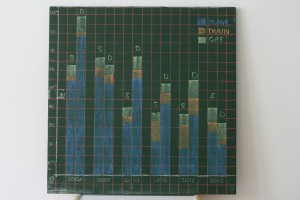I went to a very interesting presentation last night on Florian and Jörn’s forthcoming production at the Sophiensaele, Burmester & Feigl’s Hermetischer Garten at the Performer Stammtisch in Wedding.
When I read (not very carefully) that the night was to be about performance art and magic I made an assumption that the magic they meant was something in the direction of spirituality, ritual, sorcery, transformation and was surprised when they launched into a (very informative) discussion of the resonances between performance art and performance of magic tricks, the history of stage magic and conjuring. Many interesting lines of their research were shared: Houdini’s spiritualist debunking, Alan Moore (who says that magic is art) and the first modern conjurer and erstwhile clockmaker Jean Eugène Robert-Houdin.
I realised something about myself last night, though: how much I hate stage magic or modern conjuring. It is entertaining enough and it is not like I have a revulsion for watching it but I do not seek it out because I despise its message, which I think can be paraphrased:
All these things that you think of as magic is really trickery
As a child I fell deeply in love with a world in which magic is possible and discovered (by children) in books like the Narnia series and Alan Garner’s The Owl Service and The Wierdstone of Brisingamen; a world where magic is behind a wardrobe door, under a hill or in the patterns of a set of crockery.
And here is the contradiction between these two ‘magics’, because what C.S. Lewis, Alan Garner and even arch-atheist Phillp Pullman allude to could be paraphrased as
All these things you think of as daily reality is really magic
…the opposite of what the David Blaine’s of this world are saying about the nature of the universe.
In this one word magic and its two divergent meanings, revealingly ‘disambiguated’ (a very contentious urge I would argue) by wikipedia as Magic (illusion) and Magic (paranormal), we have two completely different understandings of what reality is.
I know which universe I like to live in. Now where did I put that subtle knife?






